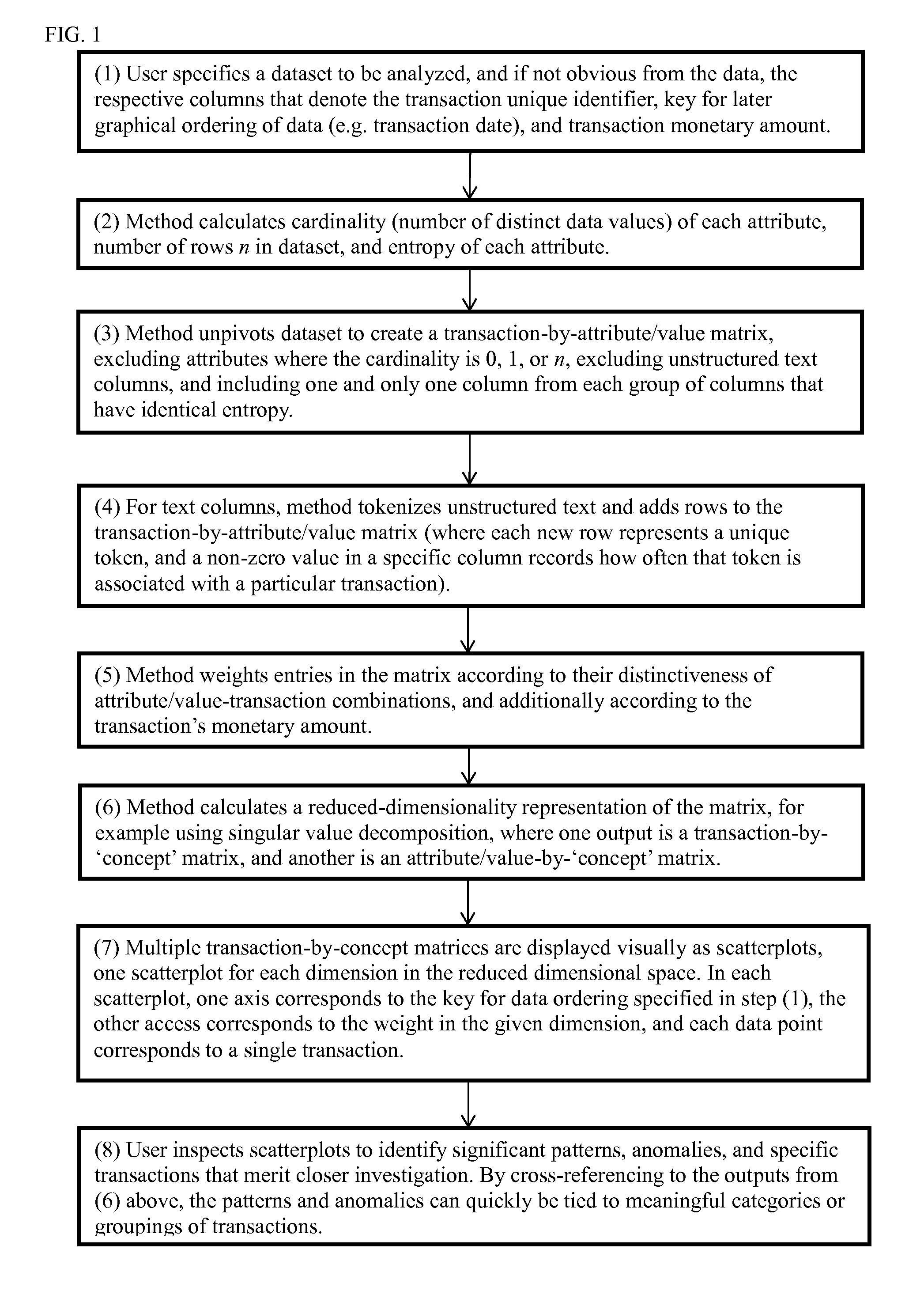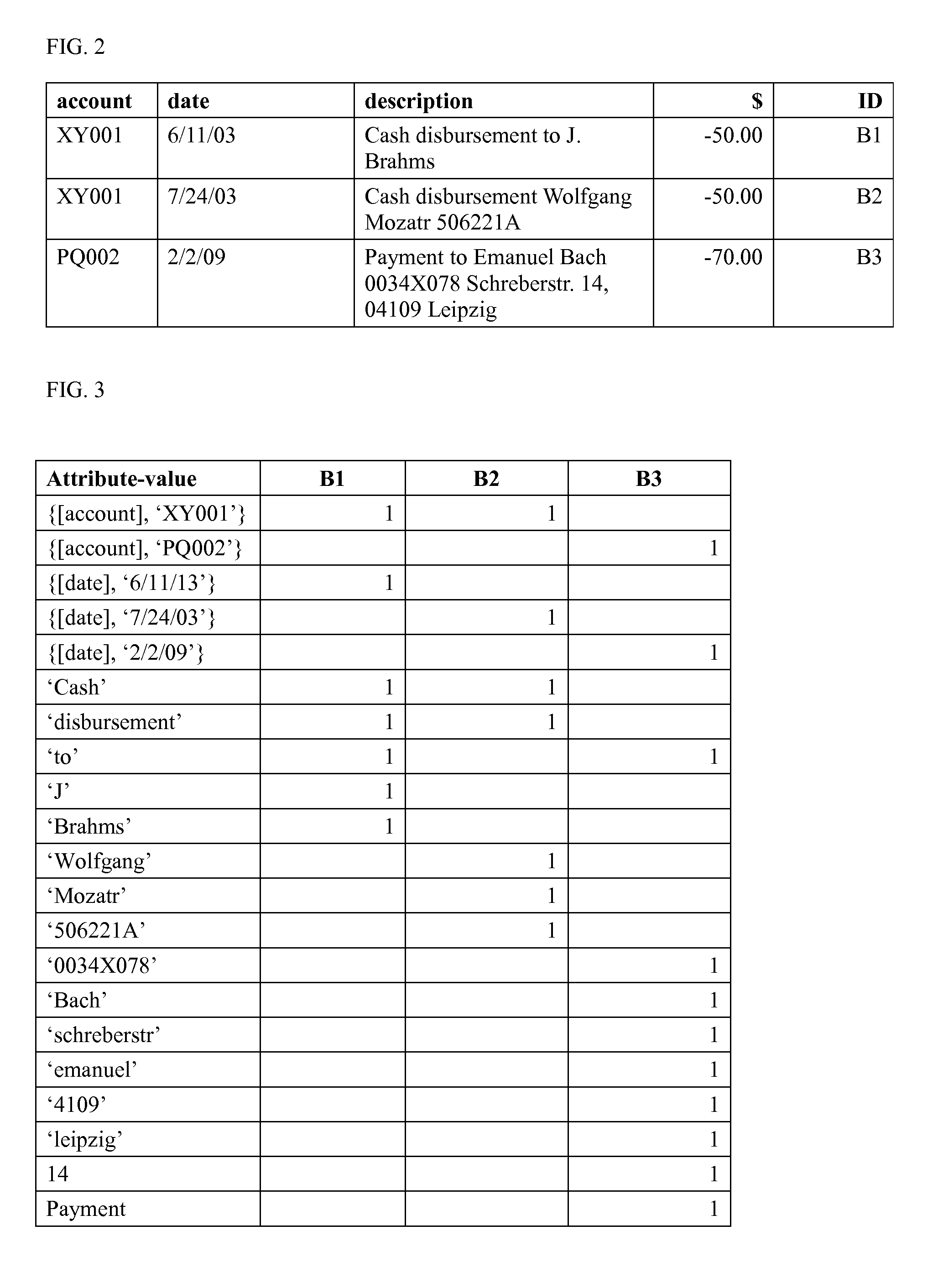Unsupervised analytical review
an analytical review and unsupervised technology, applied in the field of financial auditing, can solve the problems of time-consuming and costly building up of data of this type, unsupervised methods, and current methods, and achieve the effect of saving a large amount of labor
- Summary
- Abstract
- Description
- Claims
- Application Information
AI Technical Summary
Benefits of technology
Problems solved by technology
Method used
Image
Examples
Embodiment Construction
1. Definitions
[0037]Key terms used herein are defined below, and illustrated further in the Drawings.
[0038]‘Analytical review’ as used herein shall have a meaning consistent with that of the phrase ‘analytical procedures’ used by the Auditing Standards Board (ASB) of the American Institute of Certified Public Accountants (AICPA) in Statement of Auditing Standards No. 56, ‘Analytical Procedures’ (SAS No. 56′). SAS No. 56 requires the use of analytical procedures in the planning and overall review stages of all audits. According to SAS No. 56, ‘analytical procedures are an important part of the audit process and consist of evaluations of financial information made by a study of plausible relationships among both financial and nonfinancial data . . . . Particular conditions that can cause variations in these relationships include, for example, specific unusual transactions or events, accounting changes, business changes, random fluctuations, or misstatements.’ The present invention is ...
PUM
 Login to View More
Login to View More Abstract
Description
Claims
Application Information
 Login to View More
Login to View More - R&D
- Intellectual Property
- Life Sciences
- Materials
- Tech Scout
- Unparalleled Data Quality
- Higher Quality Content
- 60% Fewer Hallucinations
Browse by: Latest US Patents, China's latest patents, Technical Efficacy Thesaurus, Application Domain, Technology Topic, Popular Technical Reports.
© 2025 PatSnap. All rights reserved.Legal|Privacy policy|Modern Slavery Act Transparency Statement|Sitemap|About US| Contact US: help@patsnap.com



